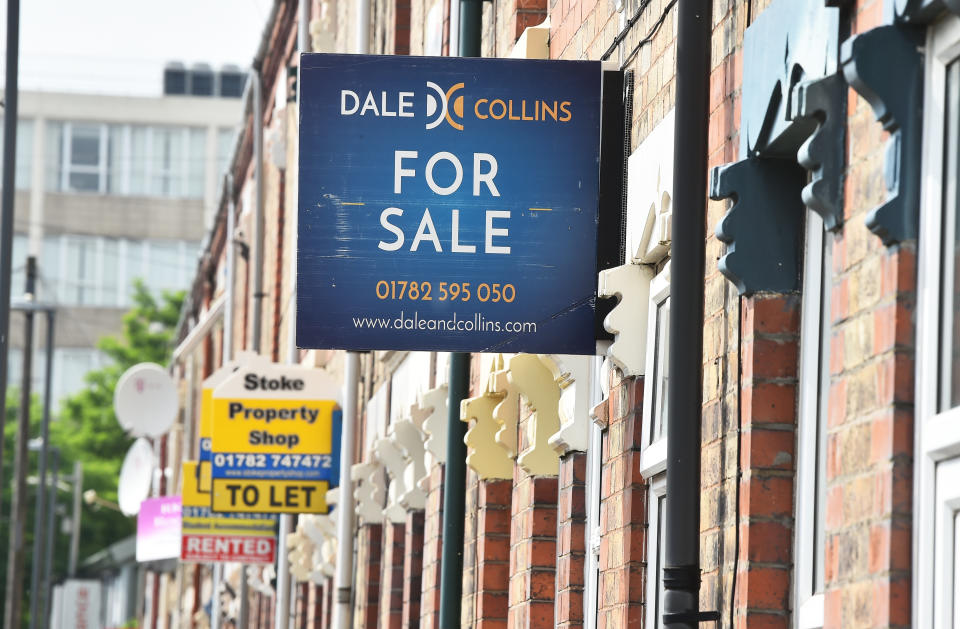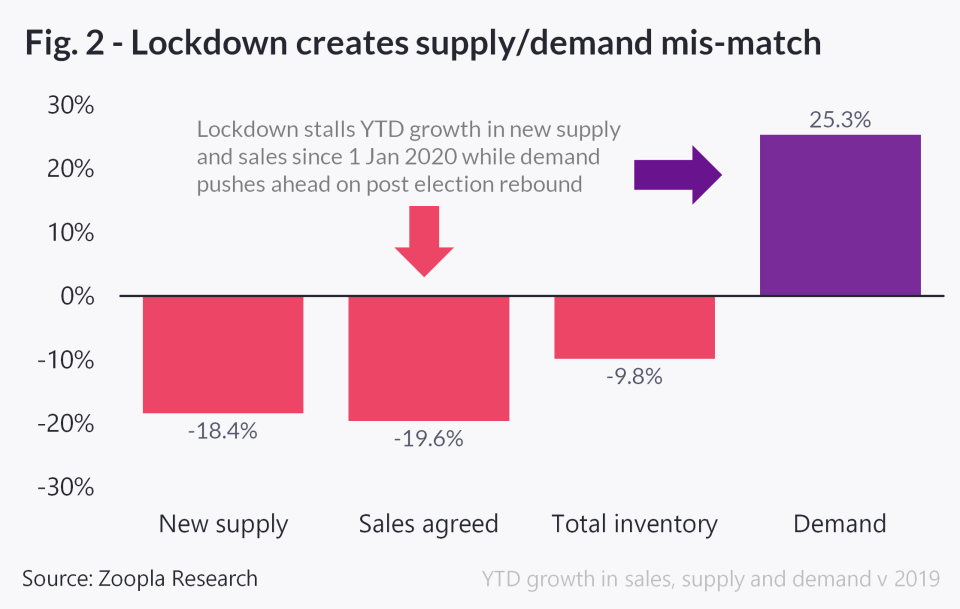Coronavirus blows £27bn hole in UK property market

The housing market is playing “catch-up” due to coronavirus lockdowns, with sales running 20% lower than at the same point in 2019, new research has shown.
124,000 property sales have been lost compared with the same period running 1 January 2019 to 30 June 2019, according to the Zoopla House Price index, equating to a deficit of £27bn ($35bn) in transactions.
There has been strong demand since the market reopened, however, while 2020 saw the strongest start to a year since 2015.
On a cumulative basis, since January 2020, demand is running 25% higher than the same period in 2019 despite the lockdown and market closure.
Despite this spike in demand, by the end of the year sales agreed are still expected to net out at 15% below 2019.
READ MORE: 'Millions less for rough sleepers' as foreign buyer stamp duty watered down
However, house prices have continue to grow, according to the report. Regional cities across the north of England have recorded the strongest growth in demand in the first half of 2020 compared with 2019, while new supply is down.
The highest spike in demand from house hunters year-on-year came in Sheffield (+46%), Liverpool (+40%) and Manchester (+33%), compared with the UK average of 25%.
Meanwhile, supply in these cities has seen a minimum decrease of 16%.
Rishi Sunak’s stamp duty holiday announced in his summer statement meant that London saw an immediate bump in sales, despite an overall decline in transactions.
In the two weeks following the announcement agreed sales jumped by 27%, in comparison to 6% for the rest of England. In other regions, average property prices are lower and less responsive to stamp duty amends.
Looking at trends since the start of the year, it is clear there is a widening gap between supply and demand. This is expected to support house prices over the second half of 2020 with year on year declines in capital values unlikely before the year end.

“The staggered reopening of housing markets across countries and the added impetus from the stamp duty holiday mean we expect buyer demand and new sales volumes to hold at current levels over the next two months,” said Richard Donnell, research and insight director, Zoopla.
“The net result will be continued support for house price growth at current levels over the second half of the year. Regional cities in northern England and the Midlands have the strongest underlying trends.”
Listen to the latest podcast from Yahoo Finance UK

 Yahoo Finance
Yahoo Finance 